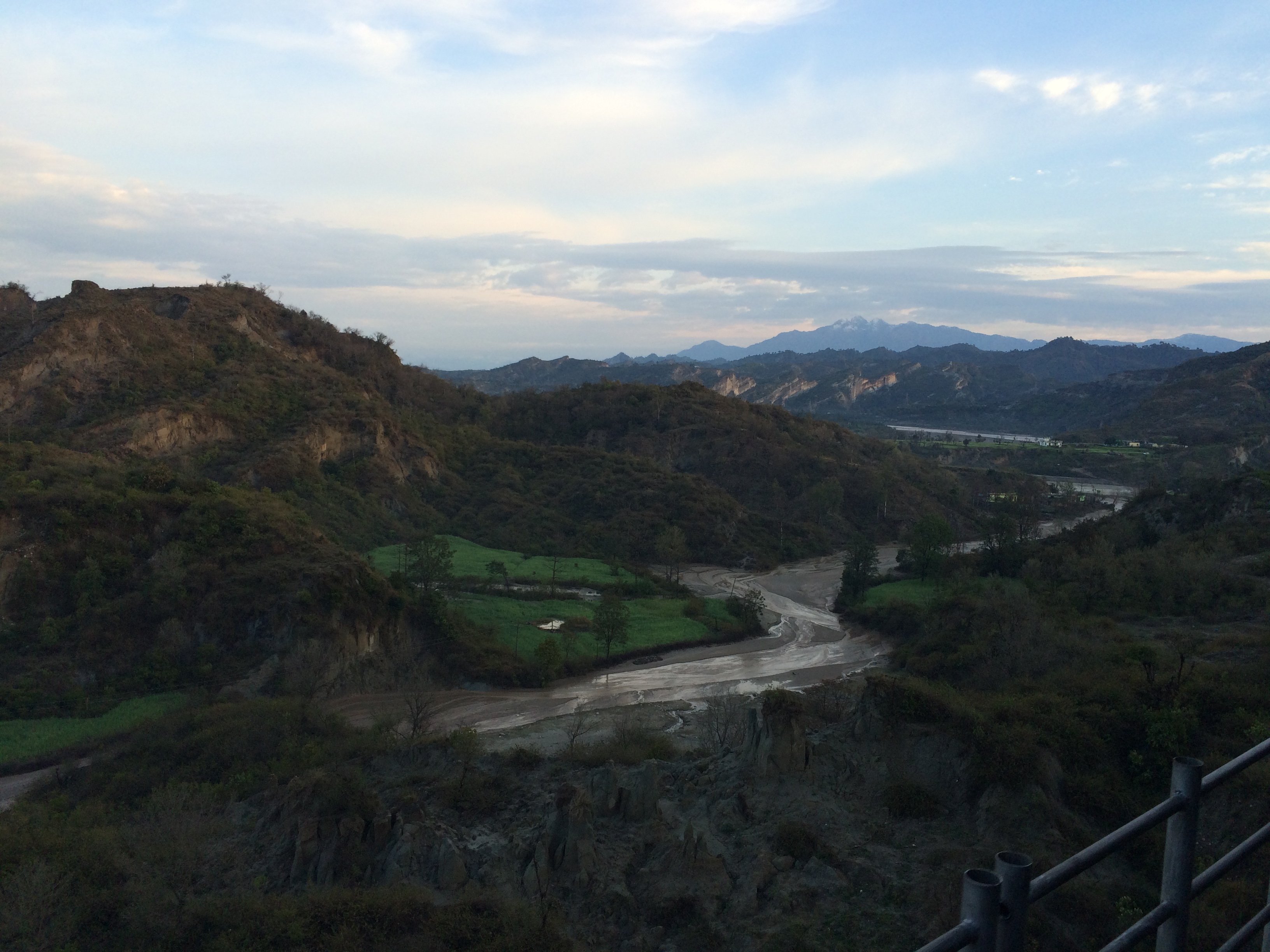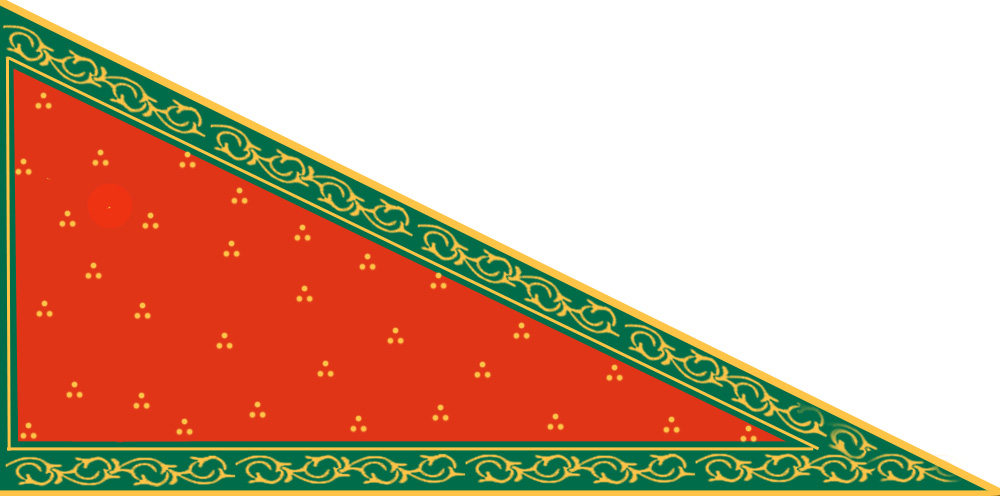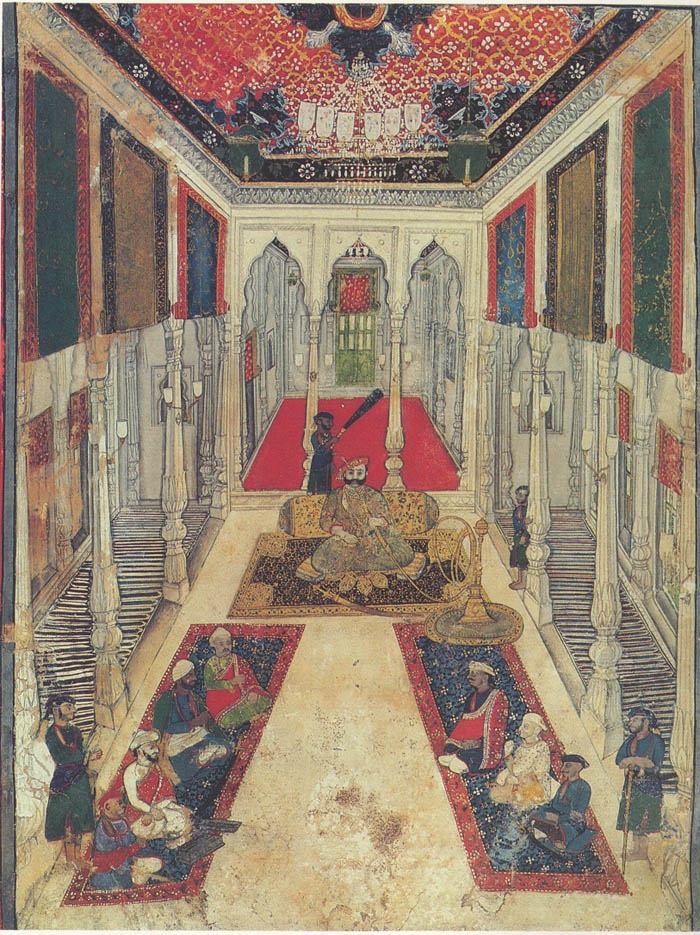|
Mian Dido Jamwal
Mian Dido Jamwal was a Dogra Rajput warrior from the Jamwal clan who rebelled against the overlords of Jammu, the Sikh Empire. He was descended from Raja Hari Dev of Jammu. Mian Dido was extremely popular among the common people of Jammu, and even today he is the subject of several ballads and legends. He is considered a hero and propagator of the regional identity of Jammu in political terms. He was killed by the troops of Gulab Singh after being surrounded. Early life According to oral tradition, Mian Dido was born in 1780, to Mian Hazara Singh (jagirdar of Jagti village) in Jagti village, Jammu. He was the descendant of Raja Hari Dev of Jammu after six generations, Raja Hari Dev was the common ancestor of both Mian Dido and Gulab Singh, the first ruler of Jammu and Kashmir princely state. Mian Hazara Singh started to train his son as a swordsman and archer right from his childhood. Rebellion In 1808, the Dogra rulers of Jammu were defeated in the Battle of Jammu and Ja ... [...More Info...] [...Related Items...] OR: [Wikipedia] [Google] [Baidu] |
Jammu
Jammu is the winter capital of the Indian union territory of Jammu and Kashmir. It is the headquarters and the largest city in Jammu district of the union territory. Lying on the banks of the river Tawi, the city of Jammu, with an area of , is surrounded by the Himalayas in the north and the northern-plains in the south. Jammu is the second most populous city of the union territory. Three battles have been fought in the city: first by the founder Raja Mal Dev against Timur in Battle of Jammu (1399), second by Sardar Bhag Singh against Mughal army in Battle of Jammu (1712) and the third by Mian Dido & Maharaja Gulab Singh against Ranjit Singh's army in Battle of Jammu (1808). Known as the ''City of Temples'' for its ancient temples and Hindu shrines, Jammu is the most visited place in the union territory. Jammu city shares its borders with the neighbouring Samba district. Etymology According to local tradition, Jammu is named after its founder, Raja Jambulochan, who ... [...More Info...] [...Related Items...] OR: [Wikipedia] [Google] [Baidu] |
Ranjit Singh
Ranjit Singh (13 November 1780 – 27 June 1839), popularly known as Sher-e-Punjab or "Lion of Punjab", was the first Maharaja of the Sikh Empire, which ruled the northwest Indian subcontinent in the early half of the 19th century. He survived smallpox in infancy but lost sight in his left eye. He fought his first battle alongside his father at age 10. After his father died, he fought several wars to expel the Afghans in his teenage years and was proclaimed as the "Maharaja of Punjab" at age 21. His empire grew in the Punjab region under his leadership through 1839. Prior to his rise, the Punjab region had numerous warring misls (confederacies), twelve of which were under Sikh rulers and one Muslim. Ranjit Singh successfully absorbed and united the Sikh misls and took over other local kingdoms to create the Sikh Empire. He repeatedly defeated invasions by outside armies, particularly those arriving from Afghanistan, and established friendly relations with the Britis ... [...More Info...] [...Related Items...] OR: [Wikipedia] [Google] [Baidu] |
1780 Births
Year 178 ( CLXXVIII) was a common year starting on Wednesday (link will display the full calendar) of the Julian calendar. At the time, it was known as the Year of the Consulship of Scipio and Rufus (or, less frequently, year 931 ''Ab urbe condita''). The denomination 178 for this year has been used since the early medieval period, when the Anno Domini calendar era became the prevalent method in Europe for naming years. Events By place Roman Empire * Bruttia Crispina marries Commodus, and receives the title of '' Augusta''. * Emperor Marcus Aurelius and his son Commodus arrive at Carnuntum in Pannonia, and travel to the Danube to fight against the Marcomanni. Asia * Last (7th) year of ''Xiping'' era and start of ''Guanghe'' era of the Chinese Han Dynasty. * In India, the decline of the Kushan Empire begins. The Sassanides take over Central Asia. Religion * The Montanist heresy is condemned for the first time. Births * Lü Meng, Chinese general (d. 220) * ... [...More Info...] [...Related Items...] OR: [Wikipedia] [Google] [Baidu] |
Hookah
A hookah (Hindustani: ( Nastaleeq), (Devanagari), IPA: ; also see other names), shisha, or waterpipe is a single- or multi-stemmed instrument for heating or vaporizing and then smoking either tobacco, flavored tobacco (often '' muʽassel''), or sometimes cannabis, hashish and opium. The smoke is passed through a water basin—often glass-based—before inhalation. The major health risks associated with smoking tobacco, cannabis, opium and other drugs through a hookah include exposure to toxic chemicals, carcinogens and heavy metals that are not filtered out by the water, alongside those related to the transmission of infectious diseases and pathogenic bacteria when hookahs are shared. Hookah and waterpipe use is a global public health concern, with high rates of use in the populations of the Middle East and North Africa as well as in young people in the United States, Europe, Central Asia, and South Asia. The hookah or waterpipe was invented by Abul-Fath Gilani, a P ... [...More Info...] [...Related Items...] OR: [Wikipedia] [Google] [Baidu] |
Lahore
Lahore ( ; pnb, ; ur, ) is the second most populous city in Pakistan after Karachi and 26th most populous city in the world, with a population of over 13 million. It is the capital of the province of Punjab where it is the largest city. Lahore is one of Pakistan's major industrial and economic hubs, with an estimated GDP ( PPP) of $84 billion as of 2019. It is the largest city as well as the historic capital and cultural centre of the wider Punjab region,Lahore Cantonment globalsecurity.org and is one of Pakistan's most socially liberal, |
Dogras
The Dogras or Dogra people, are an Indo-Aryan ethno-linguistic group in India and Pakistan consisting of the Dogri language speakers. They live predominantly in the Jammu region of Jammu and Kashmir, and in adjoining areas of Punjab, Himachal Pradesh, and northeastern Pakistan. Their historical homeland is known as Duggar. Dogra Rajputs ruled Jammu from the 19th century, when Gulab Singh was made a hereditary Raja of Jammu by Ranjit Singh, whilst his brother Dhian Singh was the empire's prime minister of Punjab, until October 1947. Through the Treaty of Amritsar (1846), they acquired Kashmir as well. The Dogra Regiment of the Indian Army primarily consists of Dogras from the Himachal Pradesh, Punjab and Jammu region. Etymology The term Dogra is thought to derive from ''Durgara'', the name of a kingdom mentioned in an eleventh century copper-plate inscription in Chamba. The inscription mentions the Raja of Chamba facing an attack by Kiras aided by the Lord of Durgara ('' ... [...More Info...] [...Related Items...] OR: [Wikipedia] [Google] [Baidu] |
Robin Hood
Robin Hood is a legendary heroic outlaw originally depicted in English folklore and subsequently featured in literature and film. According to legend, he was a highly skilled archer and swordsman. In some versions of the legend, he is depicted as being of noble birth, and in modern retellings he is sometimes depicted as having fought in the Crusades before returning to England to find his lands taken by the Sheriff. In the oldest known versions he is instead a member of the yeoman class. Traditionally depicted dressed in Lincoln green, he is said to have robbed from the rich and given to the poor. Through retellings, additions, and variations, a body of familiar characters associated with Robin Hood has been created. These include his lover, Maid Marian, his band of outlaws, the Merry Men, and his chief opponent, the Sheriff of Nottingham. The Sheriff is often depicted as assisting Prince John in usurping the rightful but absent King Richard, to whom Robin Hood remai ... [...More Info...] [...Related Items...] OR: [Wikipedia] [Google] [Baidu] |
Zamindar
A zamindar (Hindustani: Devanagari: , ; Persian: , ) in the Indian subcontinent was an autonomous or semiautonomous ruler of a province. The term itself came into use during the reign of Mughals and later the British had begun using it as a native synonym for “estate”. The term means '' land owner'' in Persian. Typically hereditary, from whom they reserved the right to collect tax on behalf of imperial courts or for military purposes. During the period of British colonial rule in India many wealthy and influential zamindars were bestowed with princely and royal titles such as ''maharaja'' ( great king), ''raja/ rai'' (king) and '' nawab''. During the Mughal Empire, zamindars belonged to the nobility and formed the ruling class. Emperor Akbar granted them mansabs and their ancestral domains were treated as jagirs. Some zamindars who were Hindu by religion and brahmin or kayastha or kshatriya by caste were converted into Muslims by the Mughals. During the coloni ... [...More Info...] [...Related Items...] OR: [Wikipedia] [Google] [Baidu] |
Battle Of Jammu (1808)
The Battle of Jammu was fought between Sikhs and the Dogra Rajputs in 1808. The Dogras lost Jammu and Hukam Singh Chimni captured the Jammu city. This was a great success for the Sikhs as now their route to Kashmir was open. Kashmir was later on conquered by Sikhs under Misr Diwan Chand the Army chief of Maharaja Ranjeet Singh in 1819. In 1820, the Sikhs had to install Gulab Singh as the Raja of Jammu and as a vassal to Ranjit Singh because of the growing revolt (led by Mian Dido Jamwal and Chib Rajputs) of the Dogra Rajputs against the Sikhs. Further reading * Sun, Sohan Lal, ` Umdat-ut- Twdnkh. Lahore, 1885–89 * Prein Singh, Baba, Khalsa Raj de Usrayye, vol. II. Hoti Mardan,1944 * Griffin, Lepel, and C.F. Massy, Chiefs and Families of Note in the Punjab. Lahore, 1909 * Khushwant Singh, Ranjit Singh: Maharajah of the Punjab. Bombay, 1962 * Panikkar, Gulab Singh 1930 References {{coord missing, India Battles in 1808 Conflicts in 1808 Jammu Jammu Jammu is the ... [...More Info...] [...Related Items...] OR: [Wikipedia] [Google] [Baidu] |
Vaishno Devi
Vaishno Devi (also known as Mata Rani, Trikuta, Ambe and Vaishnavi) is a manifestation of the Hindu Mother Goddess, Durga or Adi Shakti. The words "''Maa''" and "''Mata''" are commonly used in India for ''mother'', and thus are often heavily used in connection with Vaishno Devi. Vaishnavi took avatar from the combined energies of Mahakali, Mahalakshmi, and Mahasaraswati. The temple is located in Katra, India. Legend Author Abha Chauhan identifies Vaishno Devi with the power of Vishnu as well as the incarnation of Lakshmi. Author Pintchman identifies with great goddess Mahadevi and says Vaishno Devi contains all powers and is associated with the entire creation as Mahadevi. Pintchman further states that, "Pilgrims identify Vaishno Devi with Durga whom North Indians (and others) also name ''Sheranwali'', "the Lion-rider" more than with any other goddess". Origin According to Devi Bhagavata Purana, she is mentioned as Rudrasundari on Trikuta. In Varaha Purana, she origina ... [...More Info...] [...Related Items...] OR: [Wikipedia] [Google] [Baidu] |
Jammu And Kashmir (princely State)
Jammu and Kashmir, officially known as the Princely State of Kashmir and Jammu, was a princely state during the Company rule in India from 1757 to 1858 as well as the British Raj in India from 1846 to 1952. The princely state was created after the First Anglo-Sikh War, from the territories that had earlier been in the Sikh Empire. At the time of the partition of India and the political integration of India, Hari Singh, the ruler of the state, delayed making a decision about the future of his state. However, an uprising in the western districts of the state followed by an attack by raiders from the neighbouring Northwest Frontier Province, supported by Pakistan, forced his hand. On 26 October 1947, Hari Singh acceded to India in return for the Indian military being airlifted to Kashmir to engage the Pakistan-supported forces, starting the Kashmir conflict. The western and northern districts presently known as Azad Kashmir and Gilgit-Baltistan passed to the control of Pak ... [...More Info...] [...Related Items...] OR: [Wikipedia] [Google] [Baidu] |
Jagir
A jagir ( fa, , translit=Jāgir), also spelled as jageer, was a type of feudal land grant in the Indian subcontinent at the foundation of its Jagirdar (Zamindar) system. It developed during the Islamic rule era of the Indian subcontinent, starting in the early 13th century, wherein the powers to govern and collect tax from an estate was granted to an appointee of the state.Jāgīrdār system: INDIAN TAX SYSTEM Encyclopædia Britannica (2009) The tenants were considered to be in the servitude of the jagirdar. There were two forms of jagir, one being conditional and the other unconditional. The conditional jagir required the governing family to maintain troops and provide their service to the state when asked. The land grant w ... [...More Info...] [...Related Items...] OR: [Wikipedia] [Google] [Baidu] |


_(8411728143).jpg)




